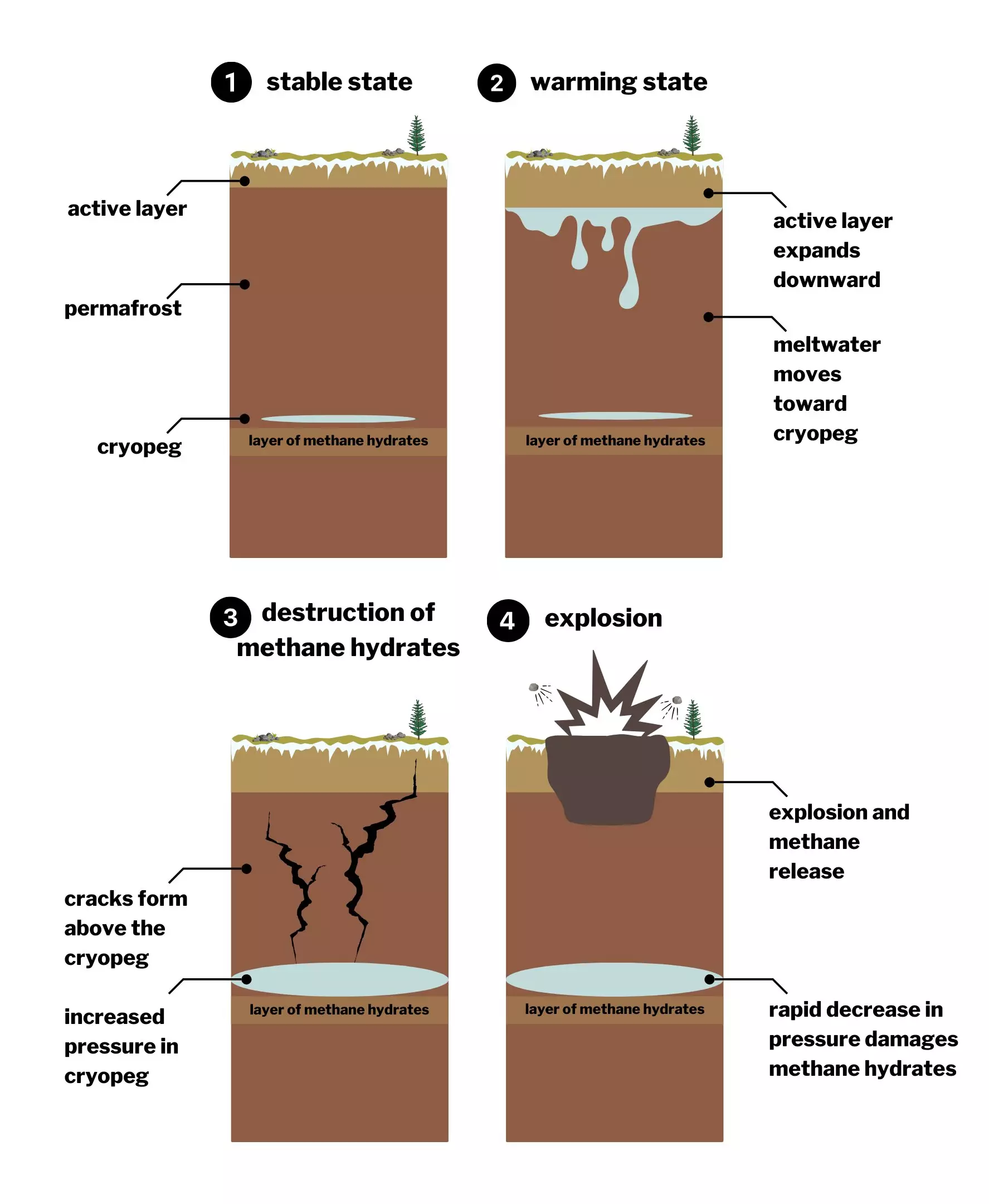In recent years, the Siberian permafrost has become synonymous with intrigue and concern, primarily due to the mysterious craters that have formed, captivating scientists and the public alike. First reported in 2014 on the Yamal Peninsula, these craters range widely in size and continue to mystify researchers trying to decipher their origins. A recent study has posited that these craters are not merely random geological phenomena but are instead the result of a complex interplay between climate change and unique geological conditions at play in this remote region. This new perspective sheds light on an increasingly important issue: the potential threat of explosive methane releases as a consequence of a warming climate.
The core of the mystery surrounding the craters is the behavior of methane, a potent greenhouse gas, which exists in a trapped state beneath the permafrost as well as in hydrate form within the layers of ice. As the permafrost thaws due to rising temperatures, the stability of these methane hydrates is significantly compromised. This leads to methane gas being released into the atmosphere, a process that researchers have been keen to explore. The recent study indicates that the craters are not merely the result of methane leaking due to thawing but occur through intensely pressurized releases of methane that can lead to explosive outcomes.
This phenomenon illustrates the far-reaching implications of climate change, as every fraction of a degree increase in temperature has the potential to destabilize these frozen reservoirs of methane. Researchers emphasize the uniqueness of the environmental conditions in the Yamal Peninsula, suggesting that such events might not be universally applicable to other permafrost regions, making the Yamal Peninsula a distinct case study in climate science.
Analyzing the geological makeup of the region is crucial in understanding the genesis of these explosions. The Yamal Peninsula features a unique layering of permafrost, where thicker layers of frozen ground can trap not only methane hydrates but also salty water known as cryopegs. The presence of these cryopegs plays a pivotal role in the explosive events. As climate change progresses, the melting permafrost interacts with these salty water reserves, resulting in an osmotic effect that ultimately causes significant pressure to build up beneath the surface.
This increase in pressure can lead to cracks forming in the permafrost, which serves as a conduit for the violent escape of methane gas. The distinction between physical and chemical processes in these explosions has important implications: they highlight the mechanical nature of the events, rooted in the geophysical dynamics beneath the surface rather than chemical reactions akin to an explosion from dynamite.
One of the most striking findings of the study is the prolonged timeline leading up to these explosive events, which can take decades to unfold. Researchers have traced this timeline back to the increased warming trends observed since the 1980s, suggesting that the craters’ emergence is a delayed response to earlier climatic shifts. This lagging effect signifies that the consequences of climate change are not immediate; rather, they are complex and layered, often emerging long after the initial causes have taken shape.
Moreover, as these geological processes unfold over extended periods, they mark not just a local issue but a global concern. The possibility of increased methane emissions from such explosive events may significantly contribute to the greenhouse effects, further exacerbating climate change.
While this new research elucidates much about the mechanisms behind the mysterious craters of the Siberian permafrost, it also opens the door for further exploration. Understanding these events has vital implications not only for local ecosystems but also for the planetary climate system as a whole. The key takeaway is that these craters are symptomatic of an evolving situation where geological and climatic factors intertwine, demanding a robust scientific inquiry into possible consequences.
The significance of these findings emphasizes the urgency of addressing the impacts of climate change and understanding local geological phenomena. As scientists continue to unravel the complex narratives hidden within Siberia’s frozen landscape, the need for comprehensive climate action becomes even more apparent. The craters may emerge as a cautionary tale about the consequences of global warming – a reminder of the intricate balance of Earth’s systems, teetering on the brink of change.


Leave a Reply